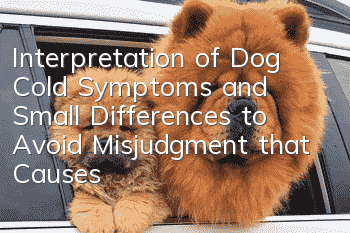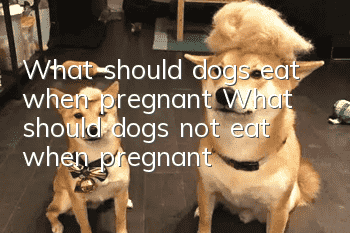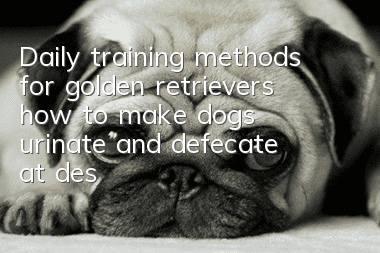Interpretation of Dog Cold Symptoms and Small Differences to Avoid Misjudgment that Causes Dogs to Get Warty

The difference between cold symptoms and diarrhea in dogs
1. Dog diarrhea is brown or brown in color and has a strong fishy smell; while cold diarrhea does not have an excessive odor;2. As the disease progresses, dogs with parvovirus will develop sunken eyeballs and significant weight loss; while the weight of a cold will not change significantly, and dehydration such as sunken eyeballs generally does not occur;
3. Dogs with parvovox will develop eye conjunctiva Symptoms of paleness and anemia are not present with colds.
4. Dogs suffering from severe parvovirus will suffer from shock and coma. The most common symptoms of a cold are lack of energy and will not cause coma.
Cold symptoms in dogs
Not in good spirits, looking listless all day, and likes to lie down; the dog’s nostrils will have a runny nose, which is watery rather than purulent; sneezing and cough, conjunctival congestion, inexplicable tears; loss of appetite, and even refusal to eat; accompanied by fever symptoms, body temperature rises, generally 39-40 degrees.Parvovirus symptoms in dogs
Enteritis type
Dogs with enteritis are initially depressed, anorexic, occasionally have fever, soft stools or mild vomiting, and then develop into frequent vomiting and severe diarrhea. . At first, the feces will be gray, yellow or milky white with jelly-like mucus, and then there will be foul-smelling soy sauce or tomato juice-like bloody stools. The sick dog suffered rapid dehydration, weight loss, sunken eye sockets, messy coat, inelastic skin, cold ears, nose, and limbs, severe depression, shock, and death. The symptoms from mild to severe at the beginning of the disease generally do not exceed 2 days, and the entire course of the disease generally does not exceed a week.Myocarditis type
It is more common in puppies between 4 and 6 weeks old. It often has no warning symptoms or only mild diarrhea, followed by sudden weakness, groaning, cyanosis of the mucous membrane, extremely difficult breathing, and rapid pulse. In weak cases, there is a murmur on heart auscultation, and death often occurs suddenly (possibly due to acute respiratory depression) within a few hours.Cold Treatment and Care for Dogs
For mild colds, dogs can be fed children’s anti-cold medicines at children’s dosages, such as children’s cold granules and cold granules; but be careful not to give them to dogs Adult. Dogs with cough symptoms can take oral compound licorice tablets, 3-4 tablets/time, twice a day. Choose foods high in protein in your diet. Pay attention to keeping your dog warm at ordinary times. Even in summer, don’t be greedy for cold. Let them lie on the floor with the air conditioner blowing. Guide your dog to exercise more and drink more water.Dog parvovirus treatment and care
The transmission rate of parvovirus is high and can be transmitted through feces, urine, vomitus, and saliva. The infection with parvovirus will worsen within 2-3 days. If not treated in time, it will become worse within a week. Possible death. If you suspect that you are infected with parvovirus, you can use a parvovirus test strip to detect it. If it is positive, you must be sent to a doctor immediately for treatment.Preventive Measures for Dog Parvovirus
1. Not yet registeredDo not take vaccinated dogs out;2. When walking the dog, do not let the dog sniff around, be sure to hold the leash, and do not eat randomly;
3. Give the dog kennel and daily life regularly Environmental disinfection;
4. Regular vaccination
5. Do not feed milk, raw food and bones.
Random articles
- After reading the advantages and disadvantages of Bago, you can decide whether to keep it or not!
- Why Pug is too fat? How to lose weight if Pug is too fat?
- What causes Bago's cough? What medicine should he take?
- What food is good for dogs to eat when they are vomiting? Come and get your dog’s stomach nourishing recipe
- Is it normal for Bug to snore? What is the reason for Bug to snore?
- Signs of an angry dog: You must avoid these situations
- What’s wrong with a dog foaming at the mouth? What should you do if a dog is foaming at the mouth?
- Golden Retriever Personality Characteristics Is the Golden Retriever good or bad?
- Things to note when bathing your dog. Under what circumstances should your dog not be bathed?
- What causes hair loss in dogs? Is it a skin disease that causes hair loss in dogs?



